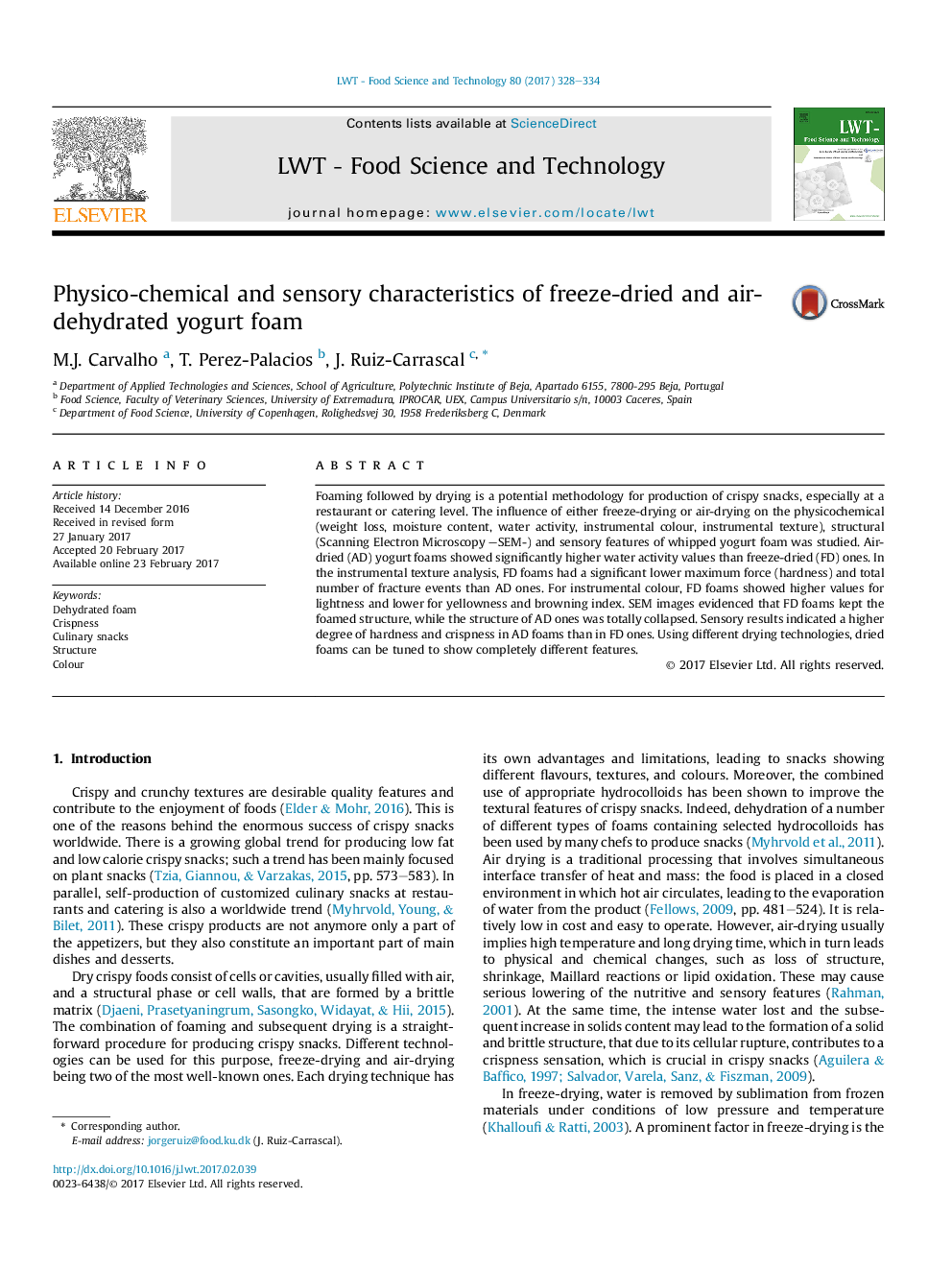| کد مقاله | کد نشریه | سال انتشار | مقاله انگلیسی | نسخه تمام متن |
|---|---|---|---|---|
| 5768552 | 1628518 | 2017 | 7 صفحه PDF | دانلود رایگان |
- Dehydration technology strongly influences the instrumental texture of dried yogurt foams.
- Air-drying develops browning on the surface of dehydrated yogurt foams, while freeze-drying keeps the original colour.
- SEM images reveal a collapsed structure in air-dried foams, while freeze-dried ones show a perfectly aerated structure.
- Sensory evaluation reveals a crispier and harder texture of air-dried yogurt foams as compared to freeze-dried ones.
Foaming followed by drying is a potential methodology for production of crispy snacks, especially at a restaurant or catering level. The influence of either freeze-drying or air-drying on the physicochemical (weight loss, moisture content, water activity, instrumental colour, instrumental texture), structural (Scanning Electron Microscopy -SEM-) and sensory features of whipped yogurt foam was studied. Air-dried (AD) yogurt foams showed significantly higher water activity values than freeze-dried (FD) ones. In the instrumental texture analysis, FD foams had a significant lower maximum force (hardness) and total number of fracture events than AD ones. For instrumental colour, FD foams showed higher values for lightness and lower for yellowness and browning index. SEM images evidenced that FD foams kept the foamed structure, while the structure of AD ones was totally collapsed. Sensory results indicated a higher degree of hardness and crispness in AD foams than in FD ones. Using different drying technologies, dried foams can be tuned to show completely different features.
Journal: LWT - Food Science and Technology - Volume 80, July 2017, Pages 328-334
